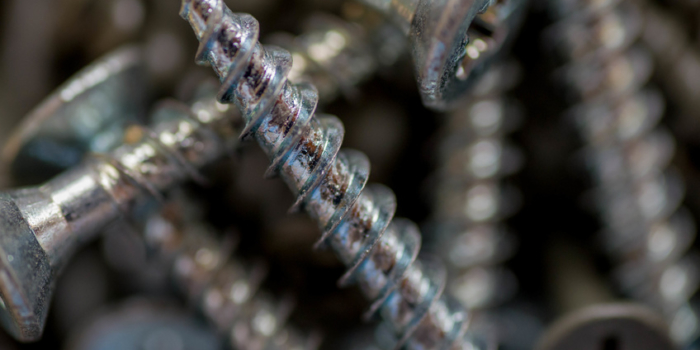The fastener industry in the U.S. is quite remarkable; with a revenue of over $30 billion annually, the production in this far-reaching field needs to keep up with constant demands. Large custom shoulder bolts to micro fasteners, screws, nuts, and bolts fulfill roles in every aspect of human life. As technology continues to get smaller, however, so too must the micro screws it depends on. So, how are micro screws made? Let’s take a look at three different techniques used to manufacture such small screws.
Check out our EZ Screw Builder to build your custom screw!
Turning
One of the most common ways used to produce micro fasteners is through an automatic screw machine. This apparatus relies on simple, consistent turning to cut the threads, usually with v-groove tools. Though thread sizes vary depending on your current project, you should be wary of the final effect; button dies, which are available in 1 mm and larger, often leave obvious burrs and sharp thread crests.
Thread Rolling
Through cold forming, thread rolling offers better thread surface appearance, tolerance, and boasts a much longer tool life than cutters. Among its many advantages, thread rolling does not produce burrs, provides a good surface finish, creates an excellent final thread form, and is stronger than cut threads. Compared to button dies, the tool life is at least 1,000 parts per tool, and the cost is less than half.
Thread Grinding
There are two types of thread grinding options available: mechanical and electrochemical. Mechanical grinders produce threads on hardened high speed steel to make forming taps, which are commonly used for consumer electronics (such as the backplate of Apple’s iPad). Electrochemical grinding, however, removes electrically conductive material by grinding it with a negatively charged abrasive grinding wheel, an electrolyte fluid, and a positively charged workpiece; materials removed from the workpiece stay in the electrolyte fluid, thereby explaining its use in situations where conventional machining is difficult and time-consuming.
When all is said and done, micro fasteners are inspected to ensure the final thread gages are of the right size and are free of burrs. After these standards are met, the tiny screws go on to be used in watches, eyeglasses, cell phones, cameras, circuit boards, medical equipment, and even miniature aerospace safety and control devices. The reliability of their size, shape, and specific measurements is what allows their final products to be so consistent and trustworthy.

